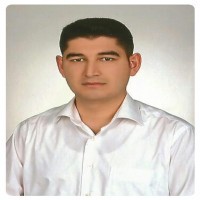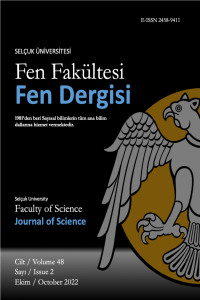Review
Research Article
Aim & Scope
Selcuk University Journal of Science Faculty publishes research and review articles on the following topics: Biology, Physics, Chemistry, Mathematics, Statistics, Environment, Biotechnology, Molecular Biology, Biochemistry, Actuarial and Agro-Forestry, Taxonomy, Biodiversity, Ecology, Conservation Biology, Anatomy, Physiology, Molecular Biology and Genetics, Medical Biology, Microbiology, Virology, Mycology, Hydrobiology, Entomology, Analytical Chemistry, Organic Chemistry, Biochemistry, Agricultural Sciences, Forestry, Medicinal Plants, General Physics, Solid State Physics, Mathematical Physics, High Energy Physics, Nuclear Physics, and Ecotourism. In addition, our journal is open to all kinds of constructive, creative, and innovative opinions, provided that it contributes to universal science.
Selçuk University Journal of Science Faculty is an international peer-reviewed and open-access e-journal. Only Turkish and English publications are accepted for the journal. Our journal is indexed in Rootindexing, Eurasian Scientific Journal Index, ResearchBib, i2or, and Sindex databases.
Author Guidelines
Manuscripts should be written in A4 (210 mmx297 mm) size, 12-point Times New Roman font, and double-spaced. There should be 2.5 cm margins on the right, left, bottom, and top of the page, and the texts should be right-left aligned. Each page and line of the manuscript should be numbered. The name(s) of the author should be written clearly and the academic title should not be stated. Manuscripts prepared in Turkish should be written by taking into account the latest spelling guide of the Turkish Language Association.
Manuscript: It should consist of Turkish Title, Turkish Abstract, Keywords, English Title, English Abstract, English Keywords, Introduction, Material and Method, Research Results, Discussion, Acknowledgments (if any), 6. References. Section names should be written in bold. If any, each figure and table should be placed in order after the place they are mentioned in the manuscript. At the end of the manuscript; a Statement of Contribution of the Researchers, a Statement of Support and Acknowledgment, if any, Statement of Conflict should be included.
Title: It should be short and descriptive, in 14 points and bold, the first letter of the words should be capitalized, written centered, and not exceeding 15 words. The English title must fully correspond to the Turkish title, written in 14 points and bold.
Abstract: Turkish and English abstracts should not exceed 300 words each. In Turkish and English abstracts, the words "Öz" and "Abstract" should be used, respectively. The abstract should include the purpose of the study, how it was done, the results and the author(s) comments on the results. References should not be used in the Abstract section.
Keywords: 1 line below the abstracts, the first letter of each keyword should be written in capital letters, the rest should be written in lowercase, if possible, maximum 6 keywords that are not used in the title and that best describe the work should be written.
Introduction: In this section; the subject of the study, its justification, previous studies directly related to the subject and the purpose of the study should be given.
Material and Method: In this section; the material and method used in the manuscript should be clearly stated.
Research Results: Obtained results should be given, if necessary, the findings should be explained, supported by charts, figures and graphics. Obtained findings should be given either as charts or graphs in order to avoid repetition. The factors that are found to be statistically significant should be interpreted with the comparison method in accordance with the statistical analysis technique applied and lettering should be made on the relevant statistics. In cases where the statistical analysis method is not chosen correctly and/or the analysis is not done properly, the editorial board may exclude the manuscript from evaluation.
Discussion: Findings should be discussed with current manuscripts about the study, but unnecessary repetitions should be avoided. The similarities and differences of the findings with other studies should be given and the reasons should be explained.
Acknowledgment: It should be as short as possible and the contribution made should be expressed.
References: Citations and bibliography should be prepared with the Endnote program. Endnote-style files of our journal are shared separately for Turkish and English manuscripts, with download links at the file upload step.
While writing the references list, the first author should be listed alphabetically according to the surname, the lines after the first line should start 1.0 cm from the right. Different works of the same author/authors should be listed starting from the old date, and works with the same date starting from a single author. References should be presented in their original language whenever possible. References that are not given in their original language can be given in Turkish or English. However, in this case, the original language of the source should be specified in parentheses.
• If the source is an article: Author's surname, initials., year, title of the article, name of the journal (italic), volume number (if any), page range.
Özgören, M., 2006, Flow Structure in the downstream of square and circular cylinders, Flow Measurement and Instrumentation, 17 (4), 225-235.
• If the source is a book: Author's surname, initial(s), year, name of the book, volume number, editor(s) / translation editors, if any, place of publication (italics), place of publication, page range.
Dasgupta, D., 1998, Artificial immune systems and their applications, Springer-Verlag, Berlin - Heidelnerg, 45-52.
Note: In translated books, the publication date of the translated book, not the original book, will be taken as a basis.
• If the source is the printed thesis: Author's surname, initial(s). (year), Title of the Thesis”, Type of Thesis (Master/PhD), Graduate School of the Thesis (italics), place of submission, page range.
• If the source is taken from the congress: Author's surname, initial(s), year, Name of the Paper, name of the congress, seminar or conference (italic), place, page range in the proceedings book.
Güneş, S. and Polat, K., 2009, Medical diagnostic support system based on the use of least square support vector machines in electrocardiogram (ECG) arrhythmia diagnosis, 13th Biomedical Engineering National Meeting, BİYOMUT-2009, İstanbul, 170-173.
• If the source is taken from the report: Author's surname, initial(s) (if the report is a legal entity, the name of the organization), year, name of the report, short name of the organization that prepared the report and report number (italic), place of publication (italic), page range .
De Castro, L. N. and Von Zuben, F. J., 2000, Artificial immune systems: Part I- Basic theory and applications, DCA-RT 02/00, Brasil, 23-28.
• If the source is taken from the current magazine and newspaper news:
Corliss, R., 1993, Pacific Overtures Times, 142 (11), 68-70.
• If the source is from a national study whose author is unknown:
Anonymous, 2006, Agricultural statistics summary, DİE Publications, Number; 12, Ankara, 22-23.
• If the source is taken from a foreign work whose author is unknown:
Anonymous, 1989, Farm accountancy data network, an A-Z of methodology, Commission Report of the EC, Brussels, 16-19.
• If more than one publication of the same author published in the same year is used, an alphabetic character is added to the end of the year of publication. For example, for three publications by the same author(s) in 2003 (2003a, 2003b, 2003c).
• Display for maps
Author's surname, initial(s)., year, Title, Scale, Publication: Publisher.
Mason, J., 1832, Map of the countries lying between Spain and India, 1:8.000.000, London: Ordnance Survey.
• Display for web pages
Author's surname, initial(s)., year, Title [online], (Edition), Place of Publication, Web address:URL [Date of Visit].
Holland, M., 2002, Guide to citing Internet sources [online], Poole, Bournemouth University,http://www.bournemouth.ac.uk/library/using/guide_to_citing_internet_sourc.html [Visit Date: November 4, 2002].
Figures and Tables: Figures, graphics, photographs and the like should be specified as "Figure" and numerical values as "Table". All figures and tables should be embedded in the manuscript. Figures and tables should be no more than 16x20 cm in length in single-page layout and 8 cm in width in double-column layout. The size of the figures and tables should be in a resolution that can be printed. Pictures supporting the research results should be in "jpg" format with 600 dpi resolution. Each table and figure should be cited in the text. All tables and figures should be numbered sequentially throughout the manuscript (Table 1 and Figure 1). Table and figure titles and descriptions should be short and concise. Headings for figures and tables should be in 10 points, texts in figures and tables should be in 9 points, texts under tables should be in 8 points Times New Roman font. If abbreviations are used in tables and figures, these abbreviations should be explained just below.
Units: SI (System International d'Units) measurement units should be used in all manuscripts. Use a dot as a decimal fraction (like 1.25 instead of 1,25). “/” should not be used in units and a space should be given between units (such as m s-1 instead of m/s, J s-1 instead of J/s, kg m s-2 instead of kg m/s2). A space must be left between the number and the symbol (such as 4 kg N ha-1, 3 kg m−1 s−2, 20 N m, 1000 s−1, 100 kPa, 22 °C). Exceptions to this rule are the degrees, minutes, and seconds symbols (°, ′, and ″) used for planar angles. They should be placed immediately after the number (like 10°, 45', 60"). The abbreviation of liter should be indicated as “l”. If they are not at the end of the sentence, do not put a period at the end of the symbols (kg, not kg.).
Formulas: Formulas should be numbered and the formula number should be shown in parentheses, aligned to the right next to the formula. Word math processor should be used in writing the formulas, main characters should be in 12 points, variables should be in italics, numbers and mathematical expressions should be given plain. If it is to be cited in the text, it should be given in the form of “Equation 1” (…the related model is given in Equation 1).
Address:
Selçuk Üniversitesi Fen Fakültesi
Fen Dergisi Editörlüğü
42075 Kampüs/Konya/Turkey
Fax: 0 332 241 24 99
E-mail: selcukfendergi@gmail.com
Web Page: https://dergipark.org.tr/sufefd
Ethical Principles and Publication Policy
PUBLICATION ETHICS
Selçuk University Journal of Science Faculty is a peer-reviewed and Open Access journal that provides an advanced forum for studies related to Science and Natural Sciences. There is unrestricted access to all published items, including research articles, and users are permitted to read, download, copy, distribute, print, search, or link to the full texts of articles in this journal without prior permission from the publisher or author.
While establishing the ethical duties and responsibilities below, they have been prepared as open access, taking into account the guidelines and policies published by the Committee on Publication Ethics (COPE).
Authors submitting a study to Selçuk University Journal of Science Faculty are expected to comply with ethical responsibilities and within the scope of publication ethics, all stakeholders are expected to have the following ethical responsibilities.
ETHICAL RESPONSIBILITIES OF THE AUTHORS
The works submitted by the authors are expected to be original. If authors benefit from or use other works, they are required to cite or cite completely and accurately. Persons who do not contribute intellectually to the content in the creation of the work should not be specified as the author. All studies submitted for publication should be disclosed, if any, and their relationships that may constitute a conflict of interest. Raw data on their articles can be requested from the authors within the framework of the evaluation processes. In such a case, the authors should be ready to present the expected data and information to the editorial board and scientific committee. Authors should have a document showing that they have the right to use the data used, the necessary permissions for research and analysis, or the consent of the experimented subjects. In the event that authors become aware of any inaccuracy or error in their published, early appearance, or evaluation work, they have an obligation to cooperate with the editor in informing, correcting, or withdrawing the journal editor or publisher. Authors cannot have their work in the application process of more than one journal at the same time. Each application can be started following the completion of the previous application. A study published in another journal cannot be sent to Selçuk University Faculty of Science Journal of Science. Changing the author responsibilities of a work whose evaluation process has begun (such as adding an author, changing the order of authors, removing an author) cannot be proposed.
ETHICAL DUTIES AND RESPONSIBILITIES OF EDITORS
General duties and responsibilities
Editors are responsible for every publication published in the Science Journal of Selçuk University Faculty of Science. In the context of this responsibility, editors have the following roles and responsibilities:
Making efforts to meet the information needs of readers and writers,
Ensuring the continuous development of the journal,
Conducting processes to improve the quality of studies published in the journal,
Supporting freedom of thought,
Ensuring academic integrity,
Continuing business processes without compromising intellectual property rights and ethical standards,
To show openness and transparency in terms of publication on issues that require correction and explanation.
Relations with the reader
Editors should make decisions by considering the knowledge, skills, and experience expectations of all readers, researchers, and practitioners. It should be careful that the published studies contribute to the reader, researcher, practitioner, and scientific literature and that they are original. In addition, editors are obliged to consider the feedback from readers, researchers, and practitioners, and to provide explanatory and informative feedback.
Relations with authors
The duties and responsibilities of the editors to the authors are as follows:
Editors should make a positive or negative decision based on the importance, original value, validity, clarity of the narrative, and the journal's goals and objectives.
Studies that are suitable for the scope of publication should be taken to the preliminary evaluation stage unless they have serious problems.
Editors should not ignore positive referee suggestions unless there is a serious problem with the study.
New editors should not change the work decisions made by previous editors unless there is a serious problem.
"Blind Refereeing and Evaluation Process" must be published and the editors must prevent deviations that may occur in the defined processes.
Authors should be informed and returned in an explanatory and informative way.
Relations with referees
The referees should be determined in accordance with the subject of the study.
Editors are responsible for providing the information and guides that the referees will need during the evaluation phase.
Editors have to consider whether there is a conflict of interest between the authors and the referees.
In the context of blind refereeing, the identity of the referees should be kept confidential.
Editors and referees; should encourage to evaluate the work in an impartial, scientific, and objective language.
Implementations and policies that increase the performance of referees should be determined.
Editors should take steps to dynamically update the reviewer pool.
Unkind and unscientific evaluations should be prevented.
Steps should be taken to ensure that the referee pool is broad.
Relations with the editorial board
Editors must ensure that all editorial board members follow the processes, editorial policies, and guidelines. The editorial board should inform its members about the publication policies and keep them informed of the developments. In addition, editors;
It should ensure that the members of the editorial board evaluate the work impartially and independently,
The new editorial board members should be able to contribute and should be determined as appropriate,
The members of the editorial board should submit studies suitable for their field of expertise for evaluation,
Must interact regularly with the editorial board,
Meetings should be held with the editorial board periodically for the development of publication policies and the journal.
Relations with the journal owner and publisher
The relationship between the editors and the publisher is based on the principle of editorial independence. In accordance with the written contract between the editors and the publisher, all decisions taken by the editors are independent of the publisher and the journal owner.
Editorial and blind peer review processes
Editors; are obliged to implement the "Blind Refereeing and Evaluation Process" policies included in the journal's publication policies. In this context, the editors ensure that the fair, impartial and timely evaluation process of each work is completed.
Quality assurance
Editors; is responsible for publishing every article published in the journal in accordance with journal publication policies and international standards.
Protection of personal data
Editors; are obliged to ensure the protection of personal data regarding the subjects or images included in the evaluated studies. It is responsible for refusing to work unless the explicit consent of the individuals used in the studies is documented. In addition, as editors; The author is responsible for protecting the individual data of the referees and readers.
The ethics committee, human, and animal rights
Editors; It is responsible for ensuring the protection of human and animal rights in the evaluated studies. Ethics committee approval for the subjects used in the studies is responsible for refusing the study in cases where there is no permission for experimental research.
Precaution against possible abuse and misconduct
Editors; are obliged to take precautions against possible abuse and misconduct. It is among the responsibilities of the editor to share the relevant findings, as well as to conduct a meticulous and objective investigation regarding the identification and evaluation of complaints regarding this situation.
Ensuring academic publication integrity
Editors should ensure that judgments containing errors, inconsistencies, or misdirection in studies are promptly corrected.
Protection of intellectual property rights
Editors; It is obliged to protect the intellectual property rights of all published articles and to defend the rights of the journal and the authors in case of possible violations. In addition, the editors are obliged to take the necessary measures so that the contents of all published articles do not violate the intellectual property rights of other publications.
Constructivism and openness to discussion
Editors;
He/she should take into consideration the persuasive criticisms of the works published in the journal and should adopt a constructive attitude towards these criticisms.
Authors of critiqued works should be given the right to reply.
One should not ignore or exclude studies with negative results.
Complaints
Editors; The author is obliged to carefully examine the complaints from the referees or readers and respond in an enlightening and explanatory manner.
Political and Commercial Concerns
The journal owner, publisher, and no other political or commercial factors affect the editors' independent decision-making.
Conflicts of interest
Editors; It guarantees the independent and impartial completion of the publication process of the studies, taking into account the conflicts of interest between the authors, referees, and other editors.
ETHICAL RESPONSIBILITIES OF REFEREES
Evaluation of all studies with "Blind Refereeing" directly affects the quality of the publication. This process provides confidence through an objective and independent evaluation of the publication. Selçuk University Journal of Science Faculty evaluation process is carried out with the principle of double-blind refereeing. Referees cannot directly communicate with authors, evaluations and comments are transmitted through the journal management system. In this process, reviewer comments on evaluation forms and full texts are sent to the authors through the editor. In this context, it is expected that the referees evaluating the work for the Science Journal of Selçuk University Faculty of Science will have the following ethical responsibilities:
Accepting work evaluation only related to the field of specialization.
Evaluate with impartiality and confidentiality.
To notify the journal editor by refusing to review the study if he/she thinks that he/she is facing a conflict of interest during the evaluation process.
Destroying the studies they have reviewed after the evaluation process in accordance with the principle of confidentiality (They can only use the final versions of the studies they have reviewed after they are published).
To make the evaluation objectively only in relation to the content of the study. Not allowing nationality, gender, religious beliefs, political beliefs, and commercial concerns to influence the assessment.
Make the assessment in a constructive and courteous language. Not to make hostile, slanderous, unkind words and insulting personal comments.
To carry out the work they accept to evaluate on time and with the above ethical responsibilities.
ETHICAL RESPONSIBILITIES OF THE PUBLISHER
Selçuk University Journal of Science Faculty Editors and Editorial Board act with the awareness of the following ethical responsibilities:
The editors are responsible for all processes of the studies submitted to the Science Journal of Selçuk University Faculty of Science. In this context, the decision-makers are the editors, regardless of economic or political gains. The editors are committed to the creation of independent decisions. The editors protect the property and copyright of every article published in Selçuk University Faculty of Science Journal of Science and undertake to keep a record of every published copy. Editors have the responsibility to take precautions against all kinds of scientific misconduct, attribution fraud, and plagiarism.
If You Face an Unethical Situation
If you encounter any unethical behavior or content other than the above-mentioned ethical responsibilities in the Science Journal of Selçuk University Faculty of Science, please report it via e-mail.
JOURNAL POLICY
Open Access Policy
Selçuk University Journal of Science Faculty, being aware of the need for easy access to information in order to advance scientific studies, supports the initiative of the peer-reviewed journal literature included in the Budapest Open Access Declaration to be open access, and presents all published articles free of charge in an environment where everyone can read and download it. In this declaration, open access is “the ability to access, read, save, copy, print, scan, link to the full text, index, transfer to software and use for any legal purpose scientific literature without financial, legal and technical barriers through the Internet”. used meaning. Considering the role of knowledge sharing in the advancement of science, open access is of great importance for researchers and readers. For this reason, the articles in this journal can be used as long as the author and original source are cited. No permissions are required from authors or publishers. Articles in this journal can be accessed by search engines, websites, blogs, and other digital platforms.
Fee Policy
No fee is charged for publishing the article and conducting the article processes in the journal.
EVALUATION PROCESS
Studies submitted to the journal for publication are primarily subjected to editorial evaluation in terms of compliance with the purpose and scope of the journal, writing rules, and the proposed draft. At this stage, studies that are not suitable for the purpose and scope of the journal are returned to the authors. Studies that do not comply with the spelling rules and draft formatting are returned to the authors to be corrected and reloaded. All works are expected to be original and original works that have not been published in any medium before. In the evaluation phase, articles are reviewed through the Ithenticate similarity scanning and plagiarism detection program.
Studies found suitable for editorial evaluation are directed to a relevant field editor according to their subject. The field editor starts the referee evaluation process of the study by determining at least two referees suitable for the study, its subject, and its quality. The referees selected for the first step evaluation process are given a 15-day evaluation period. The duty of the referees who do not complete their evaluation or upload the evaluation report at the end of this period is terminated and new referees are determined. Studies that are not deemed suitable for publication according to the results of peer-review are returned to the authors. After certain corrections, the authors are informed about the accepted studies and the study is taken into the publication process. The authors are given 15 days for the studies that the referees want to be corrected. During this period, necessary corrections should be made and the article should be uploaded to the journal system. If this period granted to the authors is exceeded, the process of the study is terminated. If necessary, the corrected version uploaded in the given time is directed to the referee again and the second step referee process is started. If the referee did not want to see the corrected version of the work, the editor makes the decision regarding the publication. If the referee wanted to see the corrected version of the study, the corrections made by the authors in the second step evaluation process are followed the referees and the referees inform the editor of their final decisions about the study. According to this decision, the editor informs the authors about the publication process.
PRINT PROCESS
A maximum of 30 articles are published in each issue of Selçuk University Journal of Science Faculty. If the accepted article in the journal is 30 or less at the time of publication, all articles are published. If the number of accepted articles is more than 30, the articles of the authors who submitted the article to the journal first are published first, and the others are left for the next issue. If an author's 2 articles are accepted while an issue is being published, the last article in the journal is left to the next issue. In addition, if an author's previous issue was published while an issue was being printed, the author's new article is left for the next issue. Apart from these, if a correction letter (erratum or corrigendum) is accepted, this article is exempt from these rules and is published in the first issue.
Price Policy
Article submission/process is entirely free of charge.
Indexes
Journal Boards
Editor in Chief
Chemistry Field Editor

Ahmed Nuri Kursunlu received the M.Sc. degree from Selcuk University, Konya, Turkey, in 2008, and the Ph.D in 2014. After that, he spent an additional year as a Research Fellow at the University of Hull (2010-2011). Moreover, he conducted a post-doc education on Pillar[n]arene in ECPM, Strasbourg University, France (2015-2016). In 2017, he was appointed as an Associate Professor at Selcuk University (Turkey). Currently, his research focuses on the BODIPY and pillar[5]arene formations and applications. he has finally worked as a Professor at Selcuk University, Türkiye since 2022.
Biotechnology Field Editor

Biyoteknoloji
Biology Field Editor
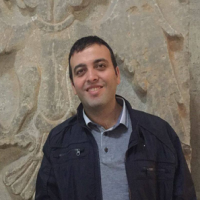
Physics Field Editor
Actuarial Field Editor
Mathematics Field Editor
Statistics Field Editor
Editorial Board



Mustafa Ozmen was born in Turkey, in 1981. He received the M.Sc. and Ph.D. degrees in Chemistry from Selcuk University, Konya, Turkey, in 2006 and 2011, respectively. He has been Professor at Selcuk University since 2021. His research interests include self-assembly, micro/nano patterning techniques, synthesis of nanoparticles (magnetic, gold, silver, TiO2, etc.) and their functionalization, electrochemical sensor applications, organic thin film deposition via Langmuir–Blodgett technique, and the spectroscopic and optical characterizations of organic thin film materials and their applications as gas sensor.
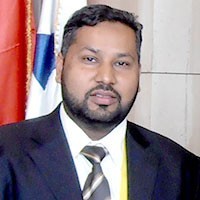

Dr. Serdar Karakurt, PhD, is a professor of Biochemistry at the Department of Biochemistry, Selcuk University, Türkiye. He earned his B.Sc. in Biology from Ege University and obtained his M.Sc. and Ph.D. degrees in Biochemistry from Middle East Technical University (METU). Following his doctoral studies, he conducted postdoctoral research in Finland, focusing on medicinal chemistry and molecular pharmacology. He is conducted advanced research as a visiting scientist at Tampere University, specializing in transcriptomics and proteomics-based approaches for cancer biology. His research group combines in vitro and in vivo models to investigate cancer biology, targeted drug delivery systems, and the therapeutic applications of bioactive compounds.
His in vitro studies explore the effects of biological agents (e.g., plant extracts, hormones, gene silencers) and chemical agents (e.g., active molecules, drug carriers, fluorescent probes) on cell proliferation, cytotoxicity, gene/protein expression, bioimaging, and enzyme activity in cancer and normal cell lines. His genomics work includes microarray and next-generation sequencing (NGS) analyses. In vivo research focuses on developing disease models for cancer and metabolic disorders.
Dr. Karakurt has served as principal investigator, advisor, or researcher on more than 58 national and international projects, including TÜBİTAK, EU-COST, SANTEZ, and bilateral collaborations. His portfolio includes cutting-edge research on therapeutic peptides from scorpion venom, nanoparticle-based drug delivery, phenolic compound anticancer mechanisms, and nanomaterial applications in wound healing and CBRN protection.
He has received over 25 national and international awards, such as the 3rd International Multidisciplinary Cancer Research Congress Best Basic Cancer Research Award (2023), EACR Young Cancer Researcher Award (2014), and Sigrid Juselius Foundation Foreign Scientist of the Year Award (2012). His publication record spans high-impact journals, and his interdisciplinary collaborations bridge biochemistry, molecular biology, pharmacology, nanotechnology, and biotechnology.

He is Editor-In-Chief of “Anti-Cancer Agents in Medicinal Chemistry” (Bentham Science Publishers, Q3 in Chemistry, Medicinal) (19/11/2020).
He is Co-Editor of Current Medicinal Chemistry (Bentham Science Publishers, Q2 in Chemistry, Medicinal) (01/3/2021).
He is Co-editor-in-chief of “Anti-Inflammatory and Anti-Allergy Agents in Medicinal Chemistry” (Bentham Science Publishers) (24/5/2016).
He was involved as a Section Editor for “Current Enzyme Inhibition” (Bentham Science Publishers) (01/09/2020-14/06/2021).
He is also a member of the Editorial Board of “Antioxidants” (MDPI, Q1 in Chemistry, Medicinal), “Expert Opinion on Therapeutic Patents” (Taylor & Francis, Q1 in Chemistry, Medicinal), “Bioorganic Chemistry” (Elsevier, Q1 in Chemistry, Organic, Q1 in Biochemistry & Molecular Biology), “Mini-Reviews in Medicinal Chemistry” (Bentham Science Publishers, Q2 in Chemistry, Medicinal), “Antibiotics” (MDPI, Q1 in Pharmacology & Pharmacy, Q2 in Infectious Diseases), “CNS & Neurological Disorders – Drug Targets” (Bentham Science Publishers, Q3 in Pharmacology & Pharmacy, Q3 in Neurosciences) and Scientifica (Hindawi).
He was appointed as Review Editor in Frontiers in Oncology (Section “Cancer Molecular Targets and Therapeutics”, 27/06/21) and in Frontiers in Drug Safety and Regulation (Section “Substance-Based Medical Devices” 31/10/21).
Guest Associate Editor in “Medicinal and Pharmaceutical Chemistry” and Review Editor in “Cancer Molecular Targets and Therapeutics”, “Ethnopharmacology” and “Substance-Based Medical Device” for Frontiers Publisher.

Dr. Syed Tufail Hussain Shah is a Professor & Director at the National Centre of Excellence in Analytical Chemistry, University of Sindh, Jamshoro, Pakistan. The Ph. D degree was awarded in 1997 from the same institution on “Quantitative Analysis of Fatty Acid Composition of Some Vegetable Oils by 13C-NMR and Chromatographic Methods”. After Ph. D, Dr. Shah started his career in edible oil industries, and he worked at responsible posts in the Edible Oil and Oilseed Processing Industries. He was the General Manager in the Edible Oil Industry when left the industry and joined the National Centre of Excellence in Analytical Chemistry in 2004. In 2005, he went to Singapore (Agilent Technologies) for one-week training on GC-MS. He learned the operation of GC-MS and application of modern GC-MS in various fields. In 2006, Dr. Shah completed his postdoctoral study in McGill University, Canada. During postdoctoral study, he gained expertise on FT-IR instrumentation and its application in the field of food chemistry. Mainly he worked on assessment of trans fat in the edible oils which is a health related startling issue all over the world. Dr. Shah presented his research work in many International and National conferences, symposia and workshops and is author of more than 230 research articles published in peer review and high repute impact factor journals. Dr. Shah is author of 5 review articles and 9 book chapters. He is a member of the Executive Editorial Board of two National and two International Journals. He has three Patents; one by USPTO and two patents are accepted and granted by IPO, Pakistan. Dr. Shah produced 27 Ph. D and 30 M. Phil Research Scholars. Dr. Shah is visiting Professor in McGill University, Canada, Selcuk University, Konya, Turkey.
Dr. Shah received Research Productivity Award (RPA) from Pakistan Council of Science and Technology (PCST), Ministry of
Science and Technology, Pakistan from 2009 to 2016. Dr. Sherazi received Best University Teacher Award (BUTA) in 2013 from Higher Education Commission (HEC), Pakistan and Gold Medal Award in Chemical and Pharmaceutical Sciences during 2016 by Pakistan Academy of Sciences on the basis of his best performance in Teaching & Research, Guiding Research Students, Co-curricular activities and Participation in International Conferences, Seminars and Symposia as an Invited speaker. On 21 January 2017, Award was given to Dr. Shah during 2nd Pakistan Edible Oil Conference (PEOC) 2017 on his invaluable contribution towards Edible oil Processing Industries. He received South Asia Triple Helix Association (SATHA) Award 2017 on the basis of published patent, significant innovation and effective contribution to the society during the 2nd SATHA Invention to Innovation Summit 2017 of Sindh held on December 20, 2017. Dr. Shah received Gold Medal Award by University of Sindh Jamshoro during Convocation held on March 9, 2018 on his valuable contribution of teaching and research. He has received Best University Teacher/Researcher Award from University of Sindh, Jamshoro during Convocation held on December 21, 2019 based on his contribution in terms of publications, impact factor, projects, National and International conference participation as well as teaching. Dr. Shah received Academia Choice Award 2021 on World Teacher Day, October 5, 2021 at PC Hotel, Karachi due to the valuable contribution and efforts for the betterment of Education in Pakistan.

Teoman Öztürk, Selçuk Üniversitesi Fizik Bölümü'nde öğretim üyesidir. 2012 yılında doktora derecesini aldıktan sonra TÜBİTAK'tan uluslararası doktora sonrası araştırma bursu kazandı ve 2013-2014 yılları arasında Michigan Üniversitesi'nde ziyaretçi araştırmacı olarak çalıştı. Mevcut araştırma ilgi alanları boya duyarlı güneş hücreleri, fotokataliz, fotodiyotlar ve perovskit güneş hücreleri dahil olmak üzere güneş enerjisi ve nanoteknolojidir.

The research activity is aimed at the development and validation of chromatographic methods for the qualitative and quantitative determination of biologically active molecules in human and animal, cosmetics, food, and environmental complex matrices. These procedures have been applied to different analytes and drugs/drug associations also finding application in clinical and pre-clinical studies, to characterize new delivery systems of the active principle to improve their pharmacological properties. In the development of the method are applied predictive models and chemometric both for the optimization of extraction protocols and for final data processing. Particular attention is given to the innovative (micro)extraction techniques and new instrumental configurations for complex matrix quantitative analysis. Scientific activity is proven by more than 238 publications in International peer-reviewed Journals, by 18 book chapters and 7 books, by more than 30 oral and 160 poster communications at National and International conferences.

Salih Zeki Bas was born in Karaman, Turkey, in 1980. He received M.Sc. and Ph.D. degrees in chemistry from Selçuk University, Konya, in 2004 and 2011, respectively. He has been a professor at the Department of Chemistry, Selçuk University, since 2023. His research interests are electrochemical sensors and biosensors, enzyme kinetics, polymer modification kinetics.

Works in fixed point theory and applications.
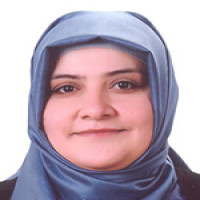
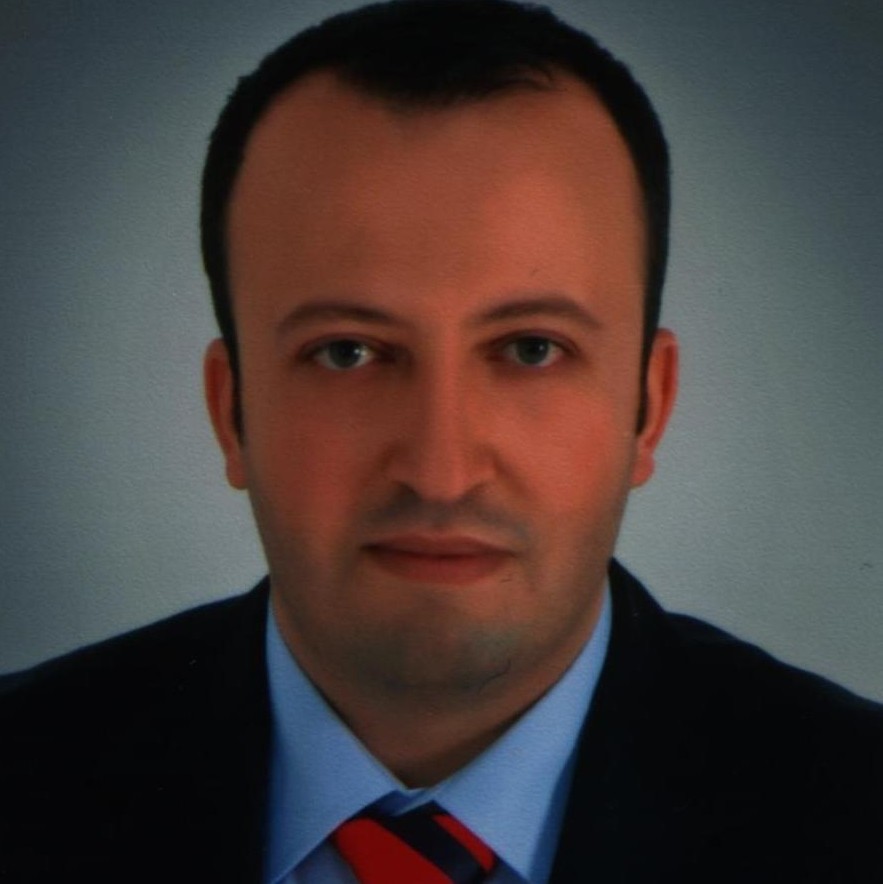




 Web
Web
İstatistik
Advisory Board
Turkish Language Editor
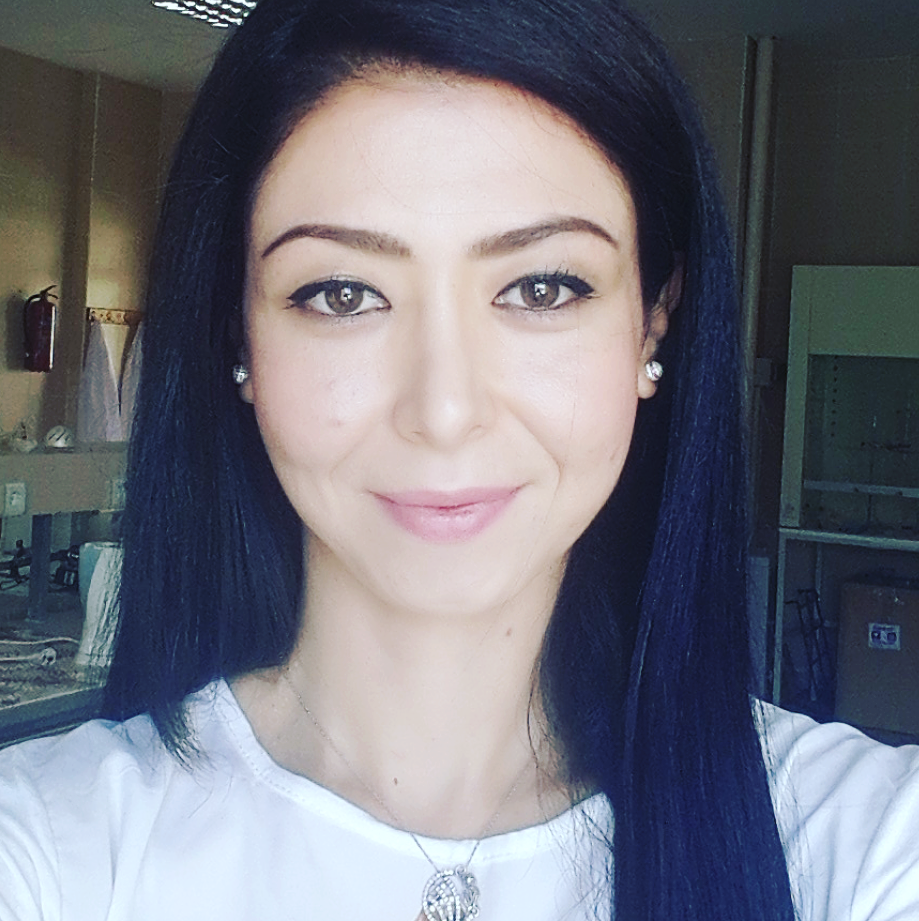
Kimya
English Language Editor

Doç. Dr. Aslıhan YILMAZ OBALI lisans derecesini 2007 yılında Hacettepe Üniversitesi Kimya Bölümü’nde (İng.) almıştır. 2008 yılında Araştırma Görevlisi olarak Selçuk Üniversitesi’ne atanmıştır. Aynı yıl yüksek lisans aşamasında İngiltere Kingston upon Hull Universitesi’nde araştırmalarda bulunmuştur. Yüksek Lisans (2010) ve Doktora (2016) derecelerini Selçuk Üniversitesi’nde inorganik kimya alanında tamamlamıştır. 2021 yılında Doçentlik ünvanını almıştır. 2022 yılından beri öğretim üyesi olarak Selçuk Üniversitesi’nde görev yapmaktadır. Alanında birçok ulusal ve uluslararası çalışmaları bulunmaktadır. Araştırma konuları inorganik kimya alanındadır. Genel olarak floresans özellikli fenantren-imidazol ligant sentezleri, inorganik sensörler, geçiş metal kompleksler üzerine çalışmaları mevcuttur.
Layout Editor
Editorial Board
Advisory Board
Journal Owner: On behalf of Selçuk University Faculty of Science, Rector Prof. Dr. Hüseyin YILMAZ
Selcuk University Journal of Science Faculty accepts articles in Turkish and English with original results in basic sciences and other applied sciences. The journal may also include compilations containing current innovations.
It was first published in 1981 as "S.Ü. Fen-Edebiyat Fakültesi Dergisi" and was published under this name until 1984 (Number 1-4).
In 1984, its name was changed to "S.Ü. Fen-Edeb. Fak. Fen Dergisi" and it was published under this name as of the 5th issue.
When the Faculty of Letters and Sciences was separated into the Faculty of Science and the Faculty of Letters with the decision of the Council of Ministers numbered 2008/4344 published in the Official Gazette dated 3 December 2008 and numbered 27073, it has been published as "Selcuk University Journal of Science Faculty" between 2009-2025.
It has been scanned in DergiPark since 2016.

Selcuk Journal of Science is licensed under a Creative Commons Attribution-NonCommercial 4.0 International (CC BY-NC 4.0) License.













